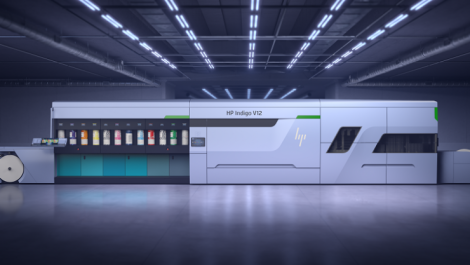Almost 50 days after confining Britons to their homes, UK Prime Minister Boris Johnson has begun to prepare the country for some changes to the lockdown measures imposed. Restrictions have similarly been relaxed, tentatively, across Europe, North America and further afield.
Despite this, we all know that life isn’t going to go back to normal any time soon and that our industry is going to have to adjust to some significant changes. Digital Labels and Packaging, spoke to people from across the sector to find out how this crisis has affected them and what they think the ‘New Normal’ might look like.
In this, the first of a series of articles, we hear from industry bodies, manufacturers and software providers.
Since the very beginning of this crisis, industry bodies and associations have been publicly lobbying on behalf of print, conducting extensive research and sharing resources. Doubtless they will have just as big a role in helping the industry adjust in the months ahead.
The BPIF, which recently published information about how companies have taken advantage of the UK Government’s support schemes, naturally takes a broad view of the entire situation. CEO Charles Jarrold tells Digital Labels and Packaging, ‘Regardless of the current COVID-19 situation, the print industry is recognised as having an ageing workforce, and skills shortages are a perennial feature of the sector. These issues will not go away. As businesses come through this pandemic, they will still need to look at their business plans to ensure that they have a highly skilled, sustainable workforce, with skills to support current and developing customer needs.’
When asked about more day-to-day changes, Mr Jarrold’s first thought was about remote working. ‘We’ve all become much more adroit and accepting of it,’ he says. ‘That’s in terms of both the practice, and the technology, notably video conferencing. Ironically, we’re probably having more regular conversations across more organisational functions than before, and that’s really helping with communications. It’s also likely that both for public health reasons and due to the increased acceptance and adoption of remote working, that we’ll all spend a little less time travelling. We are social creatures though, so face-to-face meetings will continue to matter, but we’ll all make much more use of technology to communicate.
‘It’ll be important to reduce and stagger travel to work times, especially where public transport is key,’ he adds. ‘For a lot of our sector though, that’s not possible, so it’ll be about the continued implementation of routines and practices to ensure the risks of catching or spreading the virus are minimised. As a sector, Health and Safety is extremely important, and we’ve been very active in re-emphasising the need for really good practices, to ensure business continuity, and in looking at ways to reduce risks.’
The changes
Robert Stabler leads the joint venture between Koenig and Bauer, and Durst – suitably named Koenig and Bauer Durst – focused on digital packaging printing systems. For him the most important thing to stress is the uncertainty.
‘As we all are acutely aware, this is an evolving situation and nobody knows exactly how it is going to pan out over the next months and even years. The key, we believe, is to plan for various scenarios and outcomes, continually look for signals as to what may occur, stay nimble and flexible and of course focus on communication and listening to market needs.
‘One area that we see will continue to be a challenge for brands is the continued short term shifts in demand. Agile production and automated solutions will continue to be more widely adopted by converters to meet these challenges.’
In terms of day-to-day working practices, Mr Stabler says, ‘It seems incredible that even at the beginning of March we were conducting large business meetings and conferences, sharing information over cocktails and collaborating as an industry in person. This leads to innovation and new ideas. It is going to take a long, long time for these opportunities to come back and for people to be as open to share in public. Our challenge is going to be to find new ways to stay fresh and innovative. Although video conferencing and protocols for participating have improved, we still have a long way to go.
‘My big concern is how we keep innovating and sharing effectively in the new paradigm. One positive change is that even the most conservative companies will recognise the benefits to employees and themselves for home working and flexible working.’
These views were largely echoed by Simon Cosh, digital business development manager for Dantex Group’s Pico range of digital inkjet presses, who tells Digital Labels and Packaging, ‘Things are changing all the time, people are working from home and there is a constant flow of new government guidelines. All we can say for certain is that getting back to normal needs to be a stepped process and that whatever that normal is, it may be entirely new.’
Mr Cosh expects this ‘new normal’ to see reductions in foreign travel, coupled with new global distribution systems and sales methods. ‘We’re doing demos and training online and Teams meetings will continue to replace a level of face-to-face for a time to come. Even when the lockdown is lifted, travel will inevitably be reduced; with people being much more considered with travel and visiting customers.’
‘Guidelines are changing all the time,’ he adds. ‘All businesses will have to prioritise health and safety to a totally new level, and there will be practices that become standard and we will wonder why we never did them before.’
Products
When it comes to the release of new technologies and product development, both men remain optimistic. Mr Stabler says, ‘R&D investments in our industry have long-term horizons and in the next two to three years it is unlikely that the coronavirus will affect that innovation other than maybe short-term postponement of launch dates.
‘The paradox at the moment is that the market requirement for agile, high speed, automated digital printing systems capable of mass customisation has never been greater, while in a crisis, converters are cautious about investment and there is a tendency to conserve cash. Leading converters with strong balance sheets are likely to see this as a market opportunity to invest and consolidate their leadership positions.’
Mr Cosh adds, ‘We’re continuing to look at new and improved products. This situation has actually given us a chance to work on some things that we otherwise might not have been done, and we’re looking at potential new markets and how we can generate new opportunities moving forward.
‘Five to ten years ago we launched new products at shows, but now with PR and the internet it’s more important to get out there as soon as possible. We also have to take into account that some products that might have been lower priorities prior to the pandemic will become more important now due to demand.’
Software
One part of the industry that is fortunate enough to still be able to carry out the majority of its work is software provision. Despite this, GMG marketing manager Amy Young tells Digital Labels and Packaging, ‘Coronavirus is bound to be the biggest catalyst for change in generations. Now that companies have implemented home working practices and tools for their staff, this could carry on as the status quo at least for the immediate future and potentially ongoing – with people splitting their time more between the company office and home office.’
There is a silver lining to this however, at least for GMG. ‘We believe there will be increased demand for remote services going forward. There’s been greater interest in our ColorProof Go software, which enables you to control, track and manage proofing jobs from anywhere in the world on any web enabled device. Multiple users can have access to start, stop and delete jobs, start auto calibrations, change media configurations, pause printer queues and more. We’ve seen our customers use this as a way to start jobs from their home office, so that one person can go to the office to send the proof out, while maintaining social distancing. And for those who can’t access their premises at all, GMG has set up a remote proofing service from our office to assist. We’re able to do this due to the highly accurate profiling and calibration of our software for proofing on Epson devices.’
Ms Young doesn’t think that the suspension of drupa will have a large impact on the development and launch of new products however. ‘If new technologies will save time, money or resources then PSPs will consider them. One such product that GMG will be launching in June is a multicolour solution, which is particularly relevant for digital packaging printers, or those who need to match colours across digital and ECG offset print. It gives the ability to provide accurate and consistent colour results on any press in smaller batch numbers, with less set up time and more throughput. For packaging printers – many of whom have seen increased demand for their services – automation and efficiency are key. These are, of course, also factors that will bring return on investment for printers across all sectors.’
In the next instalment of this series we will hear from two more industry bodies as well as a host of printers and converters.






